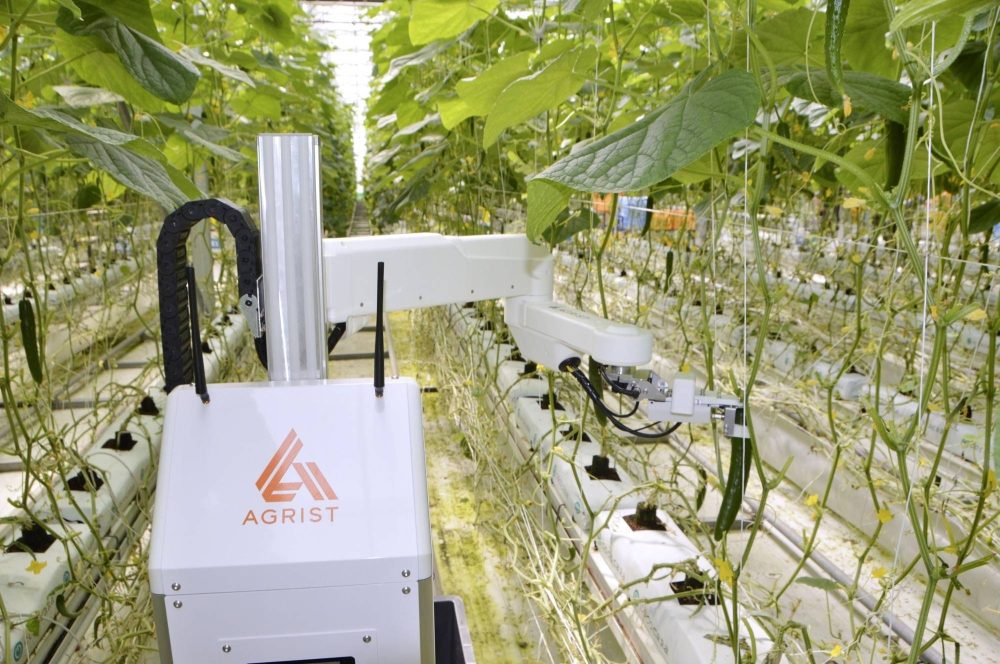TL;DR:
- Smart agriculture in Japan is on the rise, driven by the adoption of AI and robotics.
- Large-scale greenhouse farmers are using AI-equipped robots for tasks, such as cucumber and tomato harvesting.
- Agrist, a startup, developed a cucumber-harvesting robot that identifies ripe cucumbers and cuts them without damaging stems.
- Inaho, an agricultural venture, has introduced an AI-equipped robot for cherry tomato harvesting in the Netherlands.
- These innovations are seen as a solution to labor shortages in the farming sector.
- Japanese companies are looking to export their smart agriculture technology globally.
- The expansion of AI-driven agriculture may extend to open-field cultivation, requiring farms to plan for crop placement to maximize efficiency.
Main AI News:
Smart agriculture is making significant inroads in Japan, offering a ray of hope amidst severe manpower shortages in the farming sector. The integration of artificial intelligence (AI) into farming practices is empowering producers to delegate labor-intensive tasks to AI-driven robots, paving the way for a transformative shift in the cultivation and harvesting of agricultural products.
Leading the charge are large-scale greenhouse farmers who have embraced AI-equipped robots, developed by innovative venture businesses. These robotic wonders are poised to reshape the future of agriculture in the Land of the Rising Sun.
Picture this: In September, a four-wheeled AI robot gracefully glided through the lush green leaves of a plastic greenhouse at a farm in Hanyu, Saitama Prefecture. Its mission? To meticulously select only the ripest cucumbers. Takeshi Yoshida, the farm’s head and owner of Takamiya No Aisai, initially had concerns about the robot’s precision, fearing it might inadvertently damage the cucumber stems. However, his doubts were quickly dispelled as the robot moved with astounding accuracy.
“We expect much out of the robot now that labor is in such short supply,” Yoshida remarked. The firm is operated by a subsidiary of Takamiya, which manages agricultural greenhouses, while the robot itself is a creation of startup Agrist. It relies on a combination of cameras and AI to determine the optimal time for crop harvesting.
Takamiya No Aisai became the pioneer in leasing such an automated cucumber harvester from Agrist, a company that has been dedicated to developing harvesting robots since its inception in 2019 in Miyazaki Prefecture. The robot employs a camera to capture images, allowing it to assess the size of cucumbers and recognize ripe ones. It then deftly cuts between one and three cucumbers every two minutes before delicately placing them in a case, all the while avoiding damage to the precious stems.
Agrist is optimistic that as the robot’s success stories multiply, other farms will eagerly embrace similar automated systems.
Meanwhile, Inaho, an agricultural venture company in Kamakura, Kanagawa Prefecture, has taken a different approach by leasing an AI-equipped robot to a farm in the Netherlands. This versatile robot can automatically pluck cherry tomatoes either in bunches or individually, depending on the specific harvesting method employed.
The AI-powered system analyzes images to identify ripe and easily harvestable tomatoes, after which the robot’s arm goes into action. Harvesting tomatoes, known for their tendency to cluster around leaves and stems, typically requires complex mechanisms, making the development process costly. Inaho’s solution, however, is innovative, reaping approximately 40% of matured tomatoes during nighttime, leaving the rest for human harvesting during daylight hours.
With an eye on global expansion, Inaho aims to export its smart agriculture technology, starting with the Netherlands, a renowned agri-food powerhouse.
Soya Oyama, Chief Operating Officer at Inaho, is optimistic about the potential impact of these technologies. “Although it may take more time for robots to handle all aspects of crop harvesting, the current solutions can significantly alleviate the labor shortages faced by farms,” Oyama stated. Inaho is also gearing up to introduce a robot designed for harvesting asparagus, with plans to commence leasing these machines in fiscal 2025, starting in April of that year.
The future of Japanese agriculture appears promising, with Takanori Fukao, a professor of robotics at the University of Tokyo, offering insight. “Starting with greenhouse cultivation, where harvesting robots can operate seamlessly, we can anticipate the expansion of this technology into open-field cultivation,” Fukao predicts. He also emphasizes the need for farms to proactively plan and prepare for the integration of robots by considering crop placement in advance, a crucial step in maximizing the benefits of AI-driven agriculture.

A robot developed by agricultural startup Agrist uses a camera and artificial intelligence to determine if it is the right time to harvest cucumbers in a plastic greenhouse in Hanyu, Saitama Prefecture, on Sept. 28. Source: KYODO
Conclusion:
The integration of AI and robotics in Japanese agriculture marks a significant advancement, alleviating labor shortages and increasing efficiency in crop harvesting. This trend is poised to drive innovation and growth in the smart farming technology market, with potential global implications for the agriculture sector.

